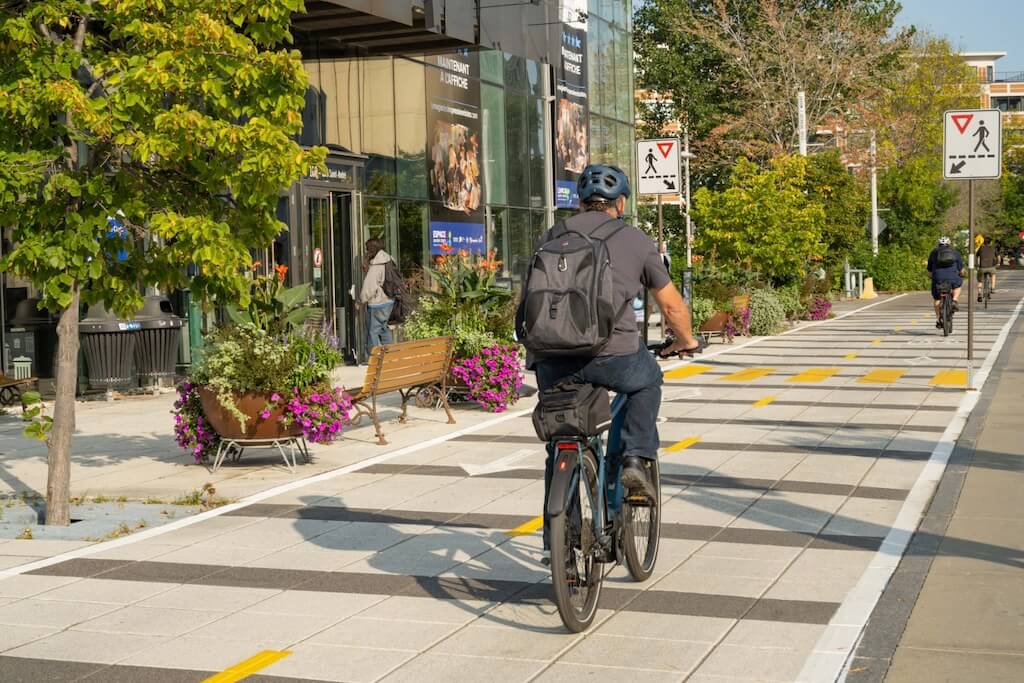Autumn Gear Guide
Find inspiration in our Gear Guide that will keep you out on your bike through wind or rain.
Download NowQuebec City is releasing details of its visionary new plan for the “Vélocité corridors,” spanning from 2024 to 2034, with a commitment to add 14 top-notch, all-season cycle routes covering a total of 150 km over the next decade. “This bold vision will allow us to have a four-season network connecting the entire territory and […]
Quebec City is releasing details of its visionary new plan for the “Vélocité corridors,” spanning from 2024 to 2034, with a commitment to add 14 top-notch, all-season cycle routes covering a total of 150 km over the next decade.
“This bold vision will allow us to have a four-season network connecting the entire territory and offering unparalleled opportunities in terms of active mobility,” declared the Mayor of Quebec, Mr. Bruno Marchand. Thanks to this, we are paving the way for a future where the health, quality of life and safety of citizens will be more than ever at the heart of priorities. Science proves that it is by offering adequate facilities that we allow our citizens to be active and healthy for longer.
The goal of the plan is to have 85% of the city’s 35 neighborhoods will have Community Vehicle Centers (CVCs), improving connections between different areas. The corridors were selected based on assessments of what people need and where they’re likely to travel actively, aligning with what citizens want overall.
“For many years, pedestrians or cyclists have sometimes felt like second-class users in Quebec,” said Angèle Pineau-Lemieux of Sustainable Transport Access. “We know that we have a huge amount of catching up to do in our infrastructure to make it comfortable and safe. The 10-year vision of the Vélocité corridors offers us the major turning point we needed so that people want to travel on foot or by bike, from Beauport to Val-Bélair, to Cap-Rouge.”
This strategic move marks a significant milestone in active mobility planning, emphasizing the city’s dedication to enhancing comfort, safety, and efficiency for pedestrians and cyclists alike. The initiative aims not only to cater to those opting for utilitarian or recreational biking but also to benefit the wider Quebec population by promoting the positive impacts associated with active mobility development in the region.
Magali Bebronne, a program director at Vélo Québec, the province’s cycling advocacy organisation, said the group is “thrilled” by the move, explaining that there are three main things that made the new plan stand out.

Quebec City bike route
“The first one is how extensive it is, and how you know, there’s a ton of equity in the sense that they are aiming to reach 85% of the neighbourhoods within the next 10 years,” she explains.
There has been a historical tendency for cities to cater to downtown needs most often and not reach the entire city, but Quebec City’s plan does.
“It’s really encouraging to see that the city of Quebec has that in mind already,” Bebronne says. “People who live in outer neighbourhoods need to have options to move around safely by bike.”
In addition, Bebronne said the quality of infrastructure is another key to the success of the plan. This is not a paint on asphalt network.
“Those offer no protection at all,” she explains. “We’re talking about physically separated and protected bikeways that will be maintained in winter, and winter is always a big thing, you know, in Quebec. And those will probably also be on main arterial roads.”
Find inspiration in our Gear Guide that will keep you out on your bike through wind or rain.
Download Now
Leave a comment